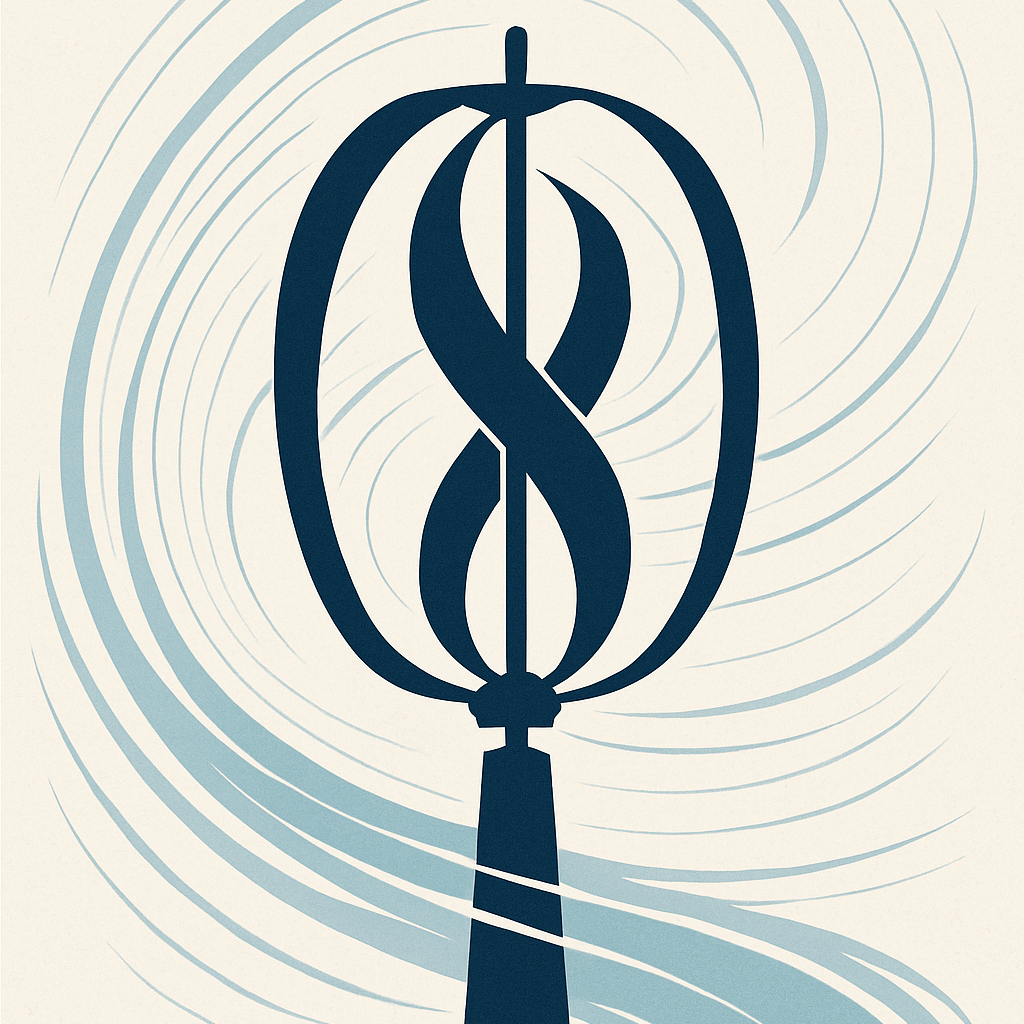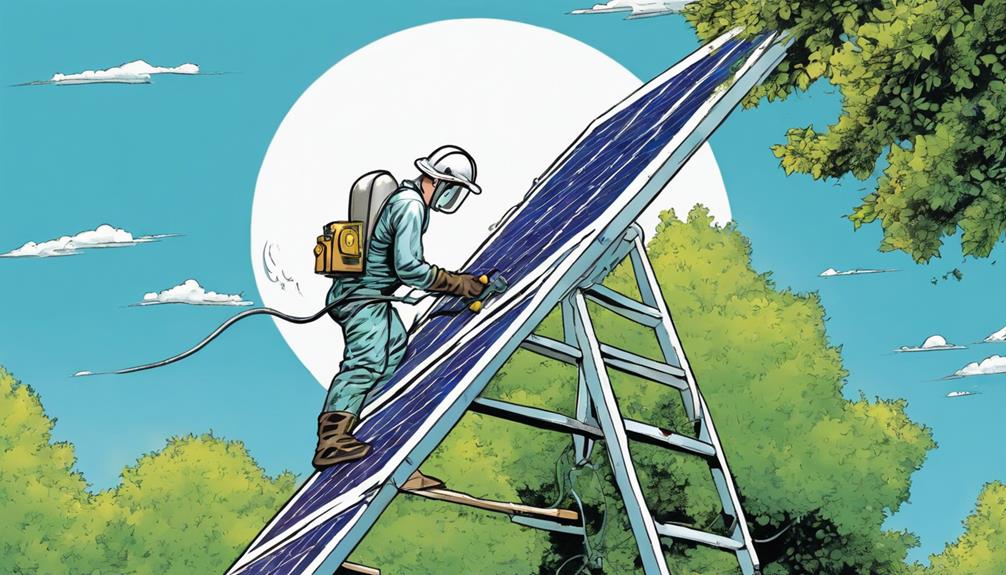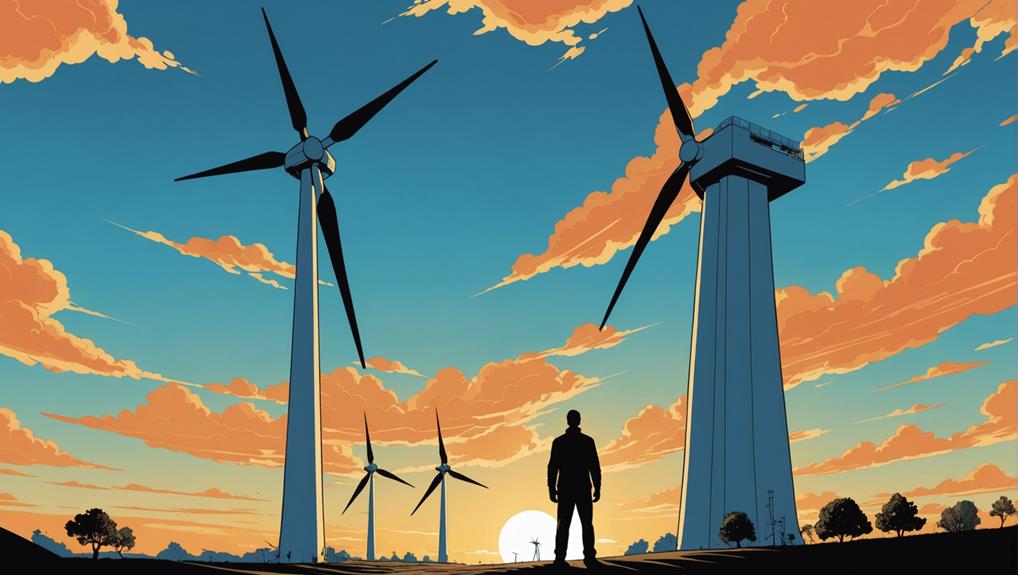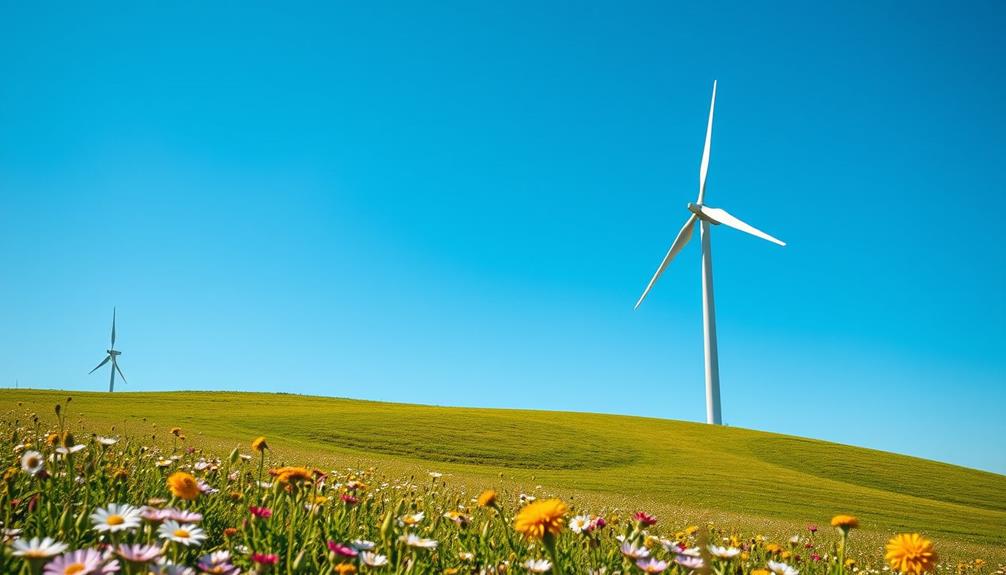Definition and Operation
Vertical axis small wind turbines (VAWTs) are compact wind generators whose rotor axis is oriented vertically. Two main types are Savonius rotors (drag devices) and Darrieus rotors (lift devices). Unlike horizontal-axis machines, VAWTs rotate without needing to face the wind; yaw systems are unnecessary and generators can be mounted near ground level for easier maintenanceklein-windkraftanlagen.com. They are often quieter and eliminate the stroboscopic “shadow flicker” that neighbours associate with traditional wind turbinesklein-windkraftanlagen.com. However, one part of the rotor always moves against the wind, which limits their maximum power coefficient to about 40 %, lower than the 50 % achieved by horizontal machinesklein-windkraftanlagen.com. Vibration and load changes are higher, restricting tower height and increasing material fatigueklein-windkraftanlagen.com.
Comparison with Horizontal Small Turbines and Photovoltaics
| Criterion | Vertical small wind (VAWT) | Horizontal small wind | Photovoltaic system |
|---|---|---|---|
| Efficiency | Up to ~40 % for lift-type rotorsklein-windkraftanlagen.com; drag-type rotors lower | Up to ~50 %klein-windkraftanlagen.com | Module efficiency ~18–24 %; area yield predictableklein-windkraftanlagen.com |
| Yaw & wind direction | No yaw mechanism required; harvests wind from any directionklein-windkraftanlagen.com | Requires yaw mechanism to face the wind | Static orientation; no yaw mechanism |
| Tower height | Typically under 10–15 m because of vibration and resonanceklein-windkraftanlagen.comklein-windkraftanlagen.com | Can use taller masts (up to 30 m), giving access to higher wind speedsadac.de | Mounted on roofs or balconies with no tower |
| Energy per kW | Highly site-dependent; a 5 kW unit yields 2 500–10 000 kWh/year at windy coastal sites but far less inlandklein-windkraftanlagen.com; a 1 m rotor produces only ~100 kWh/yearadac.de | Produces roughly double the annual energy of a VAWT with the same rotor areaadac.de | About 900–1 100 kWh per kW per year in Germanyklein-windkraftanlagen.com |
| Investment cost | ~3 000–10 000 €/kW; a 5 kW garden installation costs ~30 000 €klein-windkraftanlagen.comadac.de; similar in the U.S. (~5 120 US$/kW)windexchange.energy.gov | Costs are comparable but masts and foundations add expense | 1 200–1 600 €/kW for rooftop PVklein-windkraftanlagen.com |
| Permitting & installation | Often needs planning permission; towers above 10 m require approval and must meet noise and setback limitsklein-windkraftanlagen.compraxistipps.chip.de; roof mounting is discouraged due to turbulenceklein-windkraftanlagen.com | Also permit‑intensive; installation on a high mast is costly | Usually permit‑free; easy rooftop or balcony installation |
| Operation & maintenance | Moving parts cause vibrations; periodic inspections and lubrication necessarywindexchange.energy.gov; lifetimes shorter than PVverbraucherzentrale.de | Higher towers make maintenance harder but design is proven | Very low maintenance; long lifetime |
| Economic viability | Often uneconomic for households; cost per kWh usually exceeds the retail electricity priceklein-windkraftanlagen.comklein-windkraftanlagen.com | More efficient; potential profitability at sites ≥ 4.5 m/s average wind speedadac.de | Lowest cost per kWh; widely adopted |
Economic Analysis and Niche Applications
Costs, Yields and Payback
- Investment: A turnkey small wind system costs around 5 000 € per kW of installed capacity; the range is 3 000–10 000 €/kWklein-windkraftanlagen.com. A 5 kW system for a garden costs about 30 000 €adac.de. The U.S. average cost of small wind projects in 2021 was ~5 120 US$/kWwindexchange.energy.gov. By comparison, small rooftop PV costs 1 200–1 600 € per kWklein-windkraftanlagen.com.
- Energy output: At favourable coastal or elevated sites, a 5 kW turbine can generate 2 500–10 000 kWh annuallyklein-windkraftanlagen.com; in turbulent urban areas, a 1 m rotor yields only ≈100 kWh per yearadac.de. In Germany, PV yields around 900–1 100 kWh per kW per yearklein-windkraftanlagen.com.
- Levelised cost: For private systems under 10 kW, the levelised cost of electricity often exceeds 0.30 €/kWh, higher than the retail electricity priceklein-windkraftanlagen.com. PV systems achieve about 0.10 €/kWhklein-windkraftanlagen.com. Only very windy locations (>4.5–5 m/s) approach parityadac.dewindexchange.energy.gov.
- Payback periods: ADAC estimates a typical 5 kW system pays back after 15 years or moreadac.de. Research modelling novel helical or IceWind VAWTs on coastal buildings found paybacks around 10–13 years, reducing building electricity use by 18–31 %mdpi.com. A 160 W IceWind micro‑turbine needs about 18 years at constant rated wind and ~36 years in realistic conditionsengineering.com.
Profitable niches
- Windy coastal or hilltop locations: In open areas with sustained wind, small turbines can produce 2 500–10 000 kWh per 5 kWklein-windkraftanlagen.com and achieve levelised costs around 0.10 €/kWhklein-windkraftanlagen.com, comparable to PV.
- Off‑grid and marine use: Very small turbines (<1 kW) are suitable for charging batteries on boats, motorhomes or remote cabins. The German consumer association notes that a 1 m‑diameter micro‑turbine produces about 96 kWh/year, worth ~33 €; thus these units are mainly practical for remote applicationsverbraucherzentrale.de.
- Hybrid systems (PV + wind + storage): A wind turbine can fill the winter and nighttime gap of a PV system. Hybrid installations with a battery provide high self‑sufficiencyklein-windkraftanlagen.comklein-windkraftanlagen.com. Practical tips emphasise that vertical micro‑turbines should supplement balcony PV rather than replace it; they yield lower and more variable output and require wind speeds >3.5–4 m/spraxistipps.chip.depraxistipps.chip.de.
- Innovative omnidirectional devices: The O‑Wind turbine is a bladeless sphere that channels wind through internal ducts. According to the developer, a 2.2 m unit can produce energy equivalent to a typical UK household’s annual consumption under suitable conditions, similar to a standard PV systemo-innovations.como-innovations.com. The technology is still under development.
- Commercial systems (>10 kW): Businesses and farms with high electricity demand can justify wind turbines over 10 kW; such systems may reach competitive costs if average wind speeds exceed 5–6 m/sklein-windkraftanlagen.comadac.de.
Practical Considerations for Homeowners
- Site assessment is critical: Wind speed must be measured over several monthsklein-windkraftanlagen.com. Most residential areas experience only 2–3 m/s, whereas at least 4.5 m/s is required for economic viabilityadac.dewindexchange.energy.gov.
- Avoid rooftop mounting: Wind over rooftops is turbulent and causes vibration; roof‑mounted micro‑turbines often deliver only hobby‑level output and may create noise and structural issuesklein-windkraftanlagen.comklein-windkraftanlagen.com. A free‑standing mast in the garden is betterklein-windkraftanlagen.com.
- Permits and neighbours: Masts above 10 m often require planning permission and must meet noise and setback regulationsklein-windkraftanlagen.compraxistipps.chip.de. Vertical turbines sometimes encounter less visual opposition, yet well‑designed horizontal turbines are not necessarily louder or more intrusiveklein-windkraftanlagen.com.
- Vendor claims: The small‑wind market is fragmented and includes dubious suppliers. Unrealistic performance claims are common, especially for Savonius‑type vertical turbinesklein-windkraftanlagen.comklein-windkraftanlagen.com. Prospective buyers should seek independent certification (IEC 61400‑2) and proven installationsklein-windkraftanlagen.com.
- Maintenance: All wind turbines require routine inspections, lubrication and replacement of wear parts like brake pads and bearings; with proper care they may last 20 yearswindexchange.energy.gov. PV modules have no moving parts and typically last 25 years or more.
Conclusion
Vertical small wind turbines offer unique advantages, including omnidirectional operation, compact form and lower noise. They can provide useful power in very windy locations, off‑grid applications, and as part of hybrid systems that complement solar energy. Advanced designs such as helical rotors or the O‑Wind concept show potential, with some studies reporting paybacks around 10–13 years under ideal conditionsmdpi.com.
For the average homeowner, however, a vertical turbine is rarely a sound investment. High capital costs (~30 000 € for 5 kW), low yields in typical residential winds and intensive permitting mean that the levelised cost often exceeds the retail electricity priceklein-windkraftanlagen.com. Installing a photovoltaic system and battery is a more cost‑effective first stepklein-windkraftanlagen.com. Only after a thorough wind assessment and in exceptionally windy environmentsshould a certified high‑quality wind turbine be considered.










